One of our most precious resources is drinking water, and guess what, a garden without water will not flourish.
We are often hit with hot, dry periods without rain, and sometimes are contending with watering restrictions. But this does not mean we have to say goodbye to our beautiful gardens. We just need to change our approach to gardens and water. Here are some ideas.
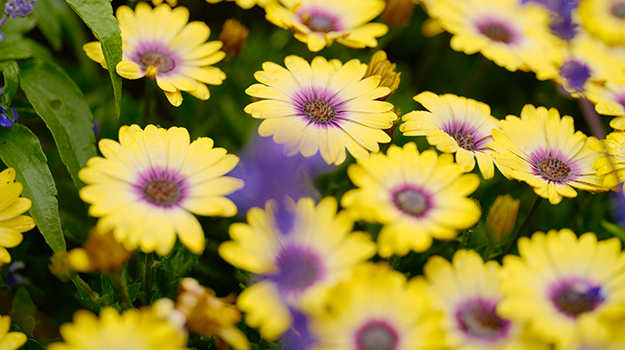
Start with improving your soil
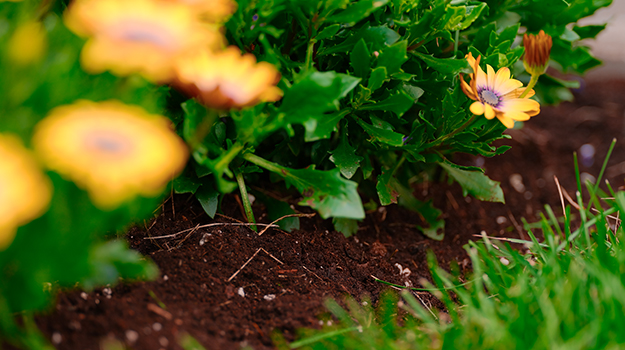
Organic matter added to existing soil will have a benefit whether you have sandy or clay soils. Mix in composted manure, triple mix, black earth or peat moss into your garden soil.
If you have sandy soil, you’ll find that it tends to be very porous, and water quickly runs through it. Sandy soil amended with organic materials will hold water longer. Clay soil is the opposite. It’s composed of tight, tiny particles with very little porosity. When dry, clay soil repels water and takes a long time to absorb it. The addition of organic material in clay soil will open the soil structure and will allow water in more quickly.
Choose ornamental plants that require less water
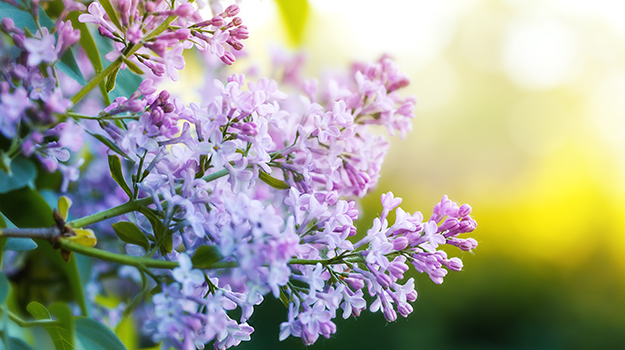
There are many shrubs, perennials and annuals that aren’t that needy. Many plant tags will identify watering needs. Look for the tough plants! Here are some examples:
Trees: green ash, bur oak, Amur maple, chokecherry, Russian olive and Manitoba maple. Junipers, mugo, Scots and lodgepole pine, Siberian larch and Colorado spruce are all drought-tolerant evergreens.
Shrubs: dogwood, mock orange, lilac, staghorn sumac, ninebark, potentilla, silver buffaloberry, wolf willow and caragana. Vines include honeysuckle and Virginia creeper.
Perennials: gaillarda, rudbeckia, echinacea, monarda, delphinium, lamb’s ears, iris, flax, baby’s breath, artemisia, dianthus, sedum, yarrow, pansy, statice and yucca.
Annuals: cosmos, marigold, annual phlox, rose campion, santolina, zinnia and annual statice.
Herbs: thyme, rosemary, oregano and sage like it dry.
Mulch all your gardens
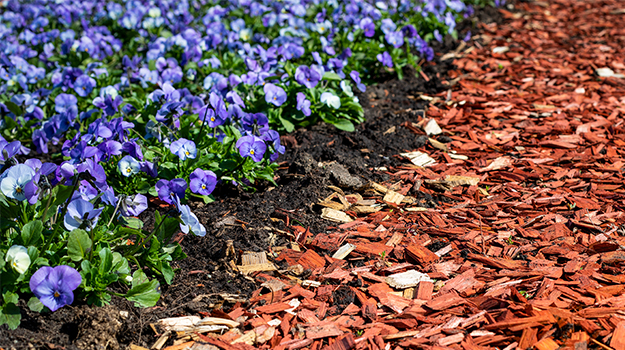
You’ll cool the soil temperature, plus reduce your water consumption by 20%-30%. As a bonus, you’ll reduce the number of weeds by 60%-80%.*
Wood mulches are excellent and commonly used for ornamental beds. However, they’re impractical for vegetable gardens, since the wood mulch will last many years. Instead, try using biodegradable mulches like de-dusted and shredded straw, finely shredded pine mulch, or coco hulls in your vegetable garden.
If aesthetics aren't important, you can even use a thick layer of newspaper or grass clippings.
With biodegradable mulches, you’ll get all the benefits of mulch with one further advantage: by simply turning over the soil and mulch together in the fall, you will be boosting the organic content of your garden soil. Next season, you’ll add new mulch, and by doing this every year, you will have a truly excellent garden soil.
Water when your plants need it
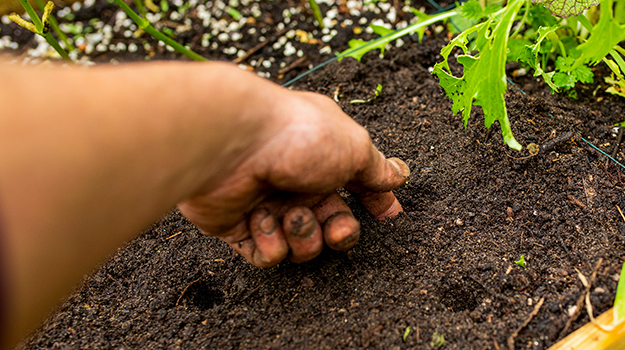
For gauging when to water more established plants, stick your finger in the dirt: it should be dry down to your knuckle and beyond, only moist much further than that. That’s when you water. It’s better to water less often, but deeply. Deep, less frequent watering will encourage deeper roots. Deeper roots mean better ability to survive drought.
You also need to be aware that timing is important. The best time to water your garden is early morning or early evening. Watering in the middle of the day in bright sunshine is wasteful, as evaporation is more likely to occur. For new seedlings and transplants, you’ll need to keep the soil moist every day until established.
Water soil, not leaves
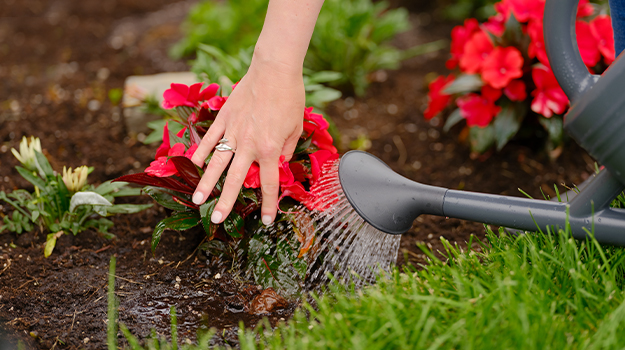
The bulk of water is needed at the base of the plant. Sprinklers are good for large areas, like lawns, but wasteful in the garden. The most efficient tool is probably a soaker hose. The soaker hose lays right on the garden bed and is placed strategically around plants to deliver water to the base by slowly seeping droplets into the soil.
There are simple homeowner-installed automated watering kits available for $100-150 that will drip irrigate automatically. Fairly easy to install, these kits just tap into your existing hose outlet. They can be set by timer for daily, even weekly, automatic drip irrigation.
Also very efficient is the use of your garden hose with a hose wand attachment to spray the base of the plant, or for smaller gardens, you can use a watering can. This way you direct your watering only where needed.
Collect rainwater
Make the most of rainwater to take advantage of a sustainable and free resource.
Gardens love rainwater because it is free of harmful salts, heavy metals and treatment chemicals. It also has the perfect pH balance and nitrate concentrations to keep your plants and soils healthy.
Rain barrels
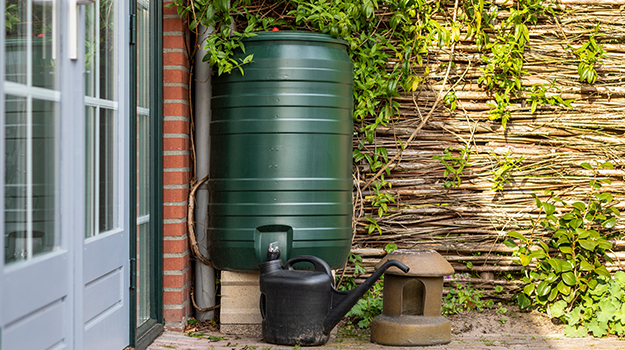
A rain barrel is a simple way to collect rainwater.
Most retail rain barrels come with instructions on how to divert water from your downspout and manage overflows. They also come with tips on how to install a bug screen that keeps pesky mosquitoes away.
Underground rainwater tanks
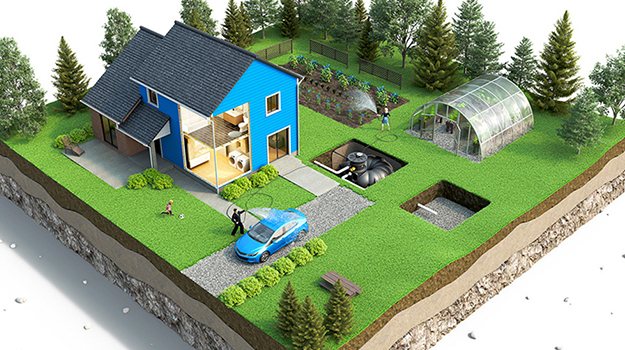
More advanced rainwater harvesters are also available. These systems are an eco-friendly choice because they reduce your consumption of municipal or well water on a large scale.
For example, Rewatec rainwater harvesters, developed and made by Premier Tech Water and Environment, direct rainwater from your roof to an underground storage tank with a capacity of up to 7,000 L.
This solution is exploding in popularity because it offers full freedom to water lawns and gardens — even if restrictions are in place due to drought. Best of all, it is easy to use and install.
Reuse potable water
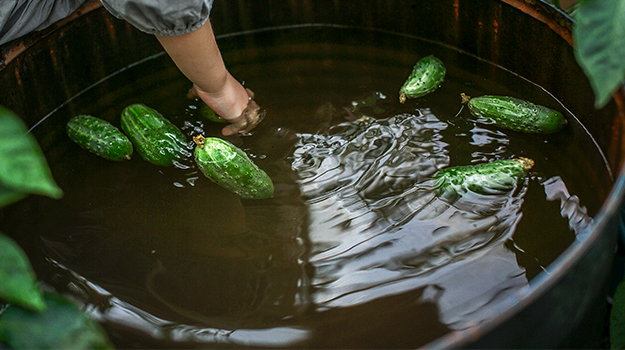
Drinking water is a precious resource that is increasingly scarce in some areas. Thankfully, there are many ways to collect used water and give it a second life in your garden.
There are easy options around the house. Collect water that comes out of your showerhead before it warms up. Save the water you use to wash or steam your fruits and vegetables. You can even take the water you empty from your dehumidifier or fish tank.
The list of ideas is almost endless. Just be sure to have a pail handy when you think of a new one!
